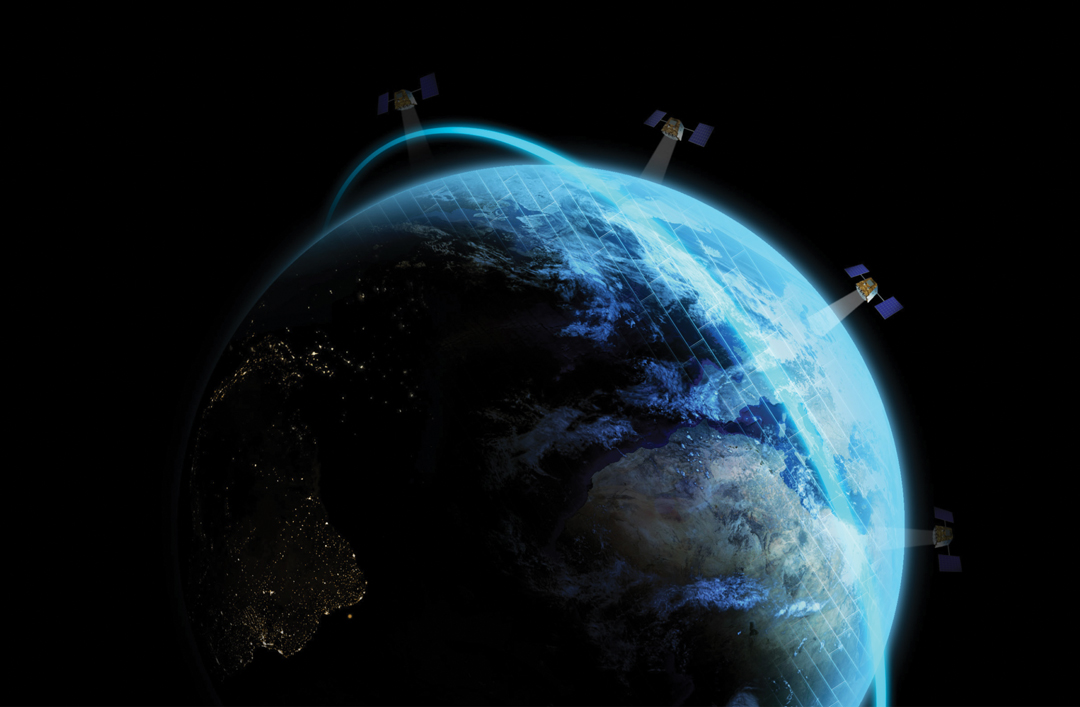NEW STARS IN THE AG SKY
BY MADELEINE BAERG • PHOTO COURTESY OF EARTHDAILY AGRO
In mid-2024, Vancouver-based EarthDaily Analytics is set to launch EarthDaily Constellation, the world’s first superspectral Earth observation satellite array. The 10-satellite grouping will deliver imagery of every agricultural acre on the planet. Dave Gebhardt said it will give farmers and agribusinesses the most powerful “change detection tool” on the planet. Gebhardt is general manager of the EarthDaily agriculture division, EarthDaily Agro, headquartered in Maple Grove, MN. “The agriculture industry needs more and better information. Our constellation will deliver a whole new level of accuracy.”
Agricultural companies that depend on satellite imagery largely use publicly available images provided by NASA’s Landsat and the European Space Agency’s Sentinel-2 satellites. However, these systems only provide a clear, cloud-free image of each acre every week to 10 days. The EarthDaily constellation’s synchronous orbit delivers imagery of the entire planet multiple times per week. This higher frequency data collection is especially critical to artificial intelligence and machine learning algorithms employed in agricultural systems.
These images will also offer significantly more data clarity by producing multiple bands, or wavelengths. Whereas current satellites produce images with between four and eight bands of information, the EarthDaily constellation will produce 22. “You get that higher resolution and detail,” said Gebhardt. “It provides the same type of information we have today plus additional, more-in-depth information we can use for looking at soil health or managing water.” Ag-related companies will analyze and synthesize the constellation’s raw data in ways unique to their needs and networks.
“Agriculture is global. Agronomy is local. This is about tracing and monitoring crops in a much more refined way to help make better, more informed, more timely decisions about crop management. We provide the information, and we leave it to local folks to use the insights and the model in the best way for their specific needs,” said Gebhardt.
Analytics will be based on comparisons made possible by the frequency and quality of the imagery. “When people think of satellite imagery, they often think of spy novels—really high-resolution images taken just moments ago,” said Gebhardt. “For us in agriculture, the value is in the quantity of imagery in order to see change.” Over time, the collected images also create a historical database that can be used to analyze the past and help predict the future.
Application of the data will vary dramatically in scale from global analysis to localized agronomics. “If you want to know what the potential wheat crop in Ukraine is going to be this year, for example, we absolutely can do that,” said Gebhardt. “But we can also double click down from the country scale to the regional to the county to the individual field.”
Gebhardt said the system is scheduled to be operational sometime in the first half of 2024. The company is fielding interest from fertilizer and pesticide suppliers, seed companies, commodity buyers, banks and insurance companies. It has finalized several major pre-launch agreements.
“We’re in talks with every significant global multinational agriculture company that uses this type of data,” said Gebhardt. “The agriculture industry is hungry for this kind of global dataset.”
The imagery will also be available beyond the agriculture sector for use in such areas as forestry, disaster prevention and recovery, as well as climate change and ESG assessment.







Comments